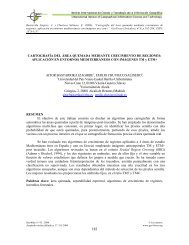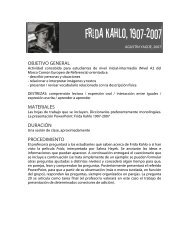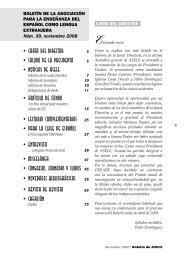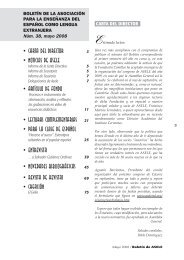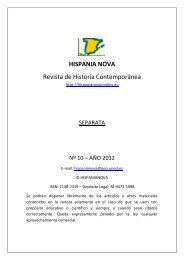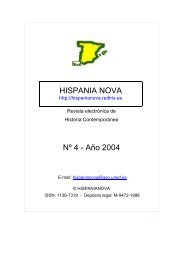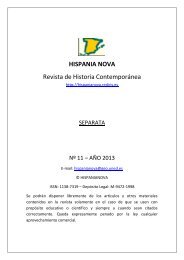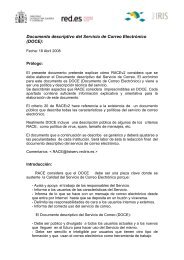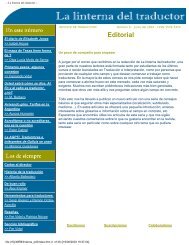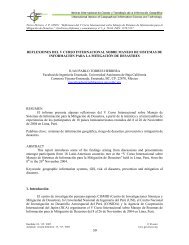Preparing an IPv6 Addressing Plan Manual - RedIRIS
Preparing an IPv6 Addressing Plan Manual - RedIRIS
Preparing an IPv6 Addressing Plan Manual - RedIRIS
- No tags were found...
Create successful ePaper yourself
Turn your PDF publications into a flip-book with our unique Google optimized e-Paper software.
2001:db8:1234:L L L G G G G B B B B B B B B B ::/64Becomes:2001:db8:1234:G GG GL LL BB BB BB BB B::/642001:db8:1234: L L L L G G G G B B B B B B B B ::/64The 4 L bits are displayed as one hexadecimal digit in the <strong>IPv6</strong> address. The four Gbits are also displayed as one hexadecimal digit. This results in the following <strong>IPv6</strong>address structure:2001:db8:1234:LGBB::/64Using this system, the location <strong>an</strong>d use type c<strong>an</strong> easily be identified in the <strong>IPv6</strong>address. The first symbol indicates the location (L) <strong>an</strong>d the second indicates the usetype (G).4.9Using VLAN NumbersSome org<strong>an</strong>isations have already included a location <strong>an</strong>d/or use type descriptionin their VLAN numbering pl<strong>an</strong>. If this is the case, you might consider tr<strong>an</strong>sferringthese numbers directly to the <strong>IPv6</strong> addressing system rather th<strong>an</strong> using the methoddescribed above.If the VLAN number system is not location-based or use type-based, it is alsopossible to tr<strong>an</strong>sfer the VLAN numbers directly to the <strong>IPv6</strong> address. This makes iteasy for system m<strong>an</strong>agers to identify the relationship between the VLAN <strong>an</strong>d the<strong>IPv6</strong> address. However, as the use type <strong>an</strong>d location do not appear in the <strong>IPv6</strong>address, it will not be possible to optimise the security policies <strong>an</strong>d routing tables.For this reason, we do not recommend this method of addressing.A VLAN number is 12 bits long, while we have 16 bits available with <strong>an</strong> <strong>IPv6</strong>address. If we only use the VLAN number in our addressing pl<strong>an</strong>, this will lead to awaste of 15/16ths of the <strong>IPv6</strong> addresses. This will probably not be a problem forsmaller org<strong>an</strong>isations, <strong>an</strong>d it might even be practical.There are two methods of dealing with this:1. We might incorporate the VLAN number decimally into the <strong>IPv6</strong> address. Thehexadecimal digits A to F will remain unused. This format is easily legible, but it15<strong>Preparing</strong> <strong>an</strong> <strong>IPv6</strong> <strong>Addressing</strong> Pl<strong>an</strong>




